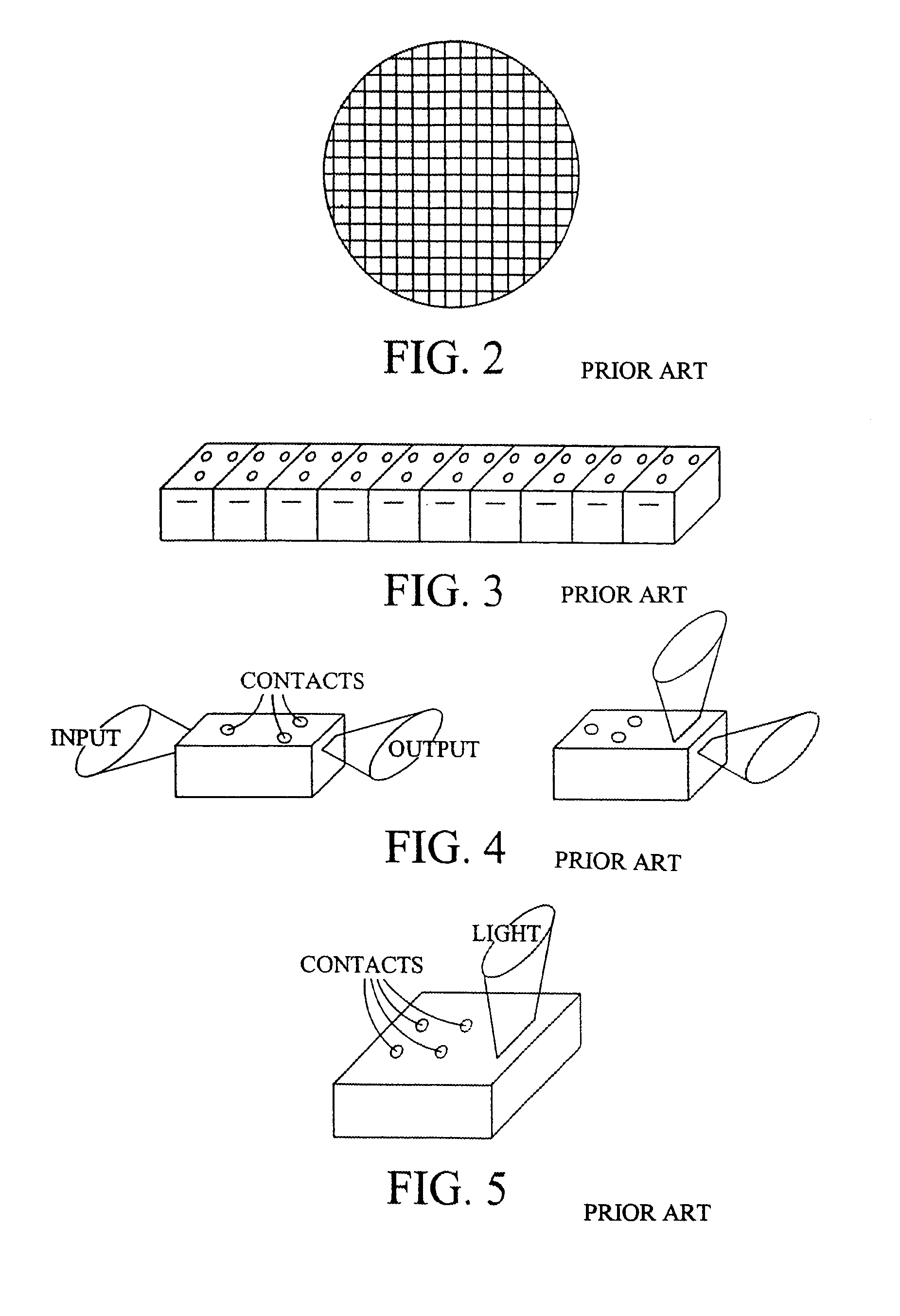Probe station with two platens
a technology of probe station and platen, which is applied in the direction of measurement device, semiconductor/solid-state device testing/measurement, instruments, etc., can solve the problems of limited space available insufficient space on the platen to effectively accommodate all the necessary positioners, and limited space for extending the probe through the platen. , to achieve the effect of increasing the difficulty of positioning electrical and optical probes, the limited space is significan
- Summary
- Abstract
- Description
- Claims
- Application Information
AI Technical Summary
Benefits of technology
Problems solved by technology
Method used
Image
Examples
Embodiment Construction
[0023]During testing, the end of the optical probes are typically aligned with the edge of the device under test while the electrical probes are typically aligned with the contacts on the upper surface of the device under test, with both the electrical probes and the optical probes being supported by the platen. In many cases, the entire platen is moved in the z-axis direction for selectively contacting the electrical probes on the device under test. Alternatively, the chuck is moved in a z-axis direction. The z-axis movement of the platen permits consistent simultaneous relative movement of all the electrical and optical probes. Each component of the device under test is successively moved in x and / or y lateral directions relative to the electrical probes using a chuck or other support to a location under the electrical probes.
[0024]The present inventors considered the z-axis movement of the platen or chuck to perform simultaneous probing and came to the realization that normal z-a...
PUM
 Login to View More
Login to View More Abstract
Description
Claims
Application Information
 Login to View More
Login to View More - R&D
- Intellectual Property
- Life Sciences
- Materials
- Tech Scout
- Unparalleled Data Quality
- Higher Quality Content
- 60% Fewer Hallucinations
Browse by: Latest US Patents, China's latest patents, Technical Efficacy Thesaurus, Application Domain, Technology Topic, Popular Technical Reports.
© 2025 PatSnap. All rights reserved.Legal|Privacy policy|Modern Slavery Act Transparency Statement|Sitemap|About US| Contact US: help@patsnap.com



